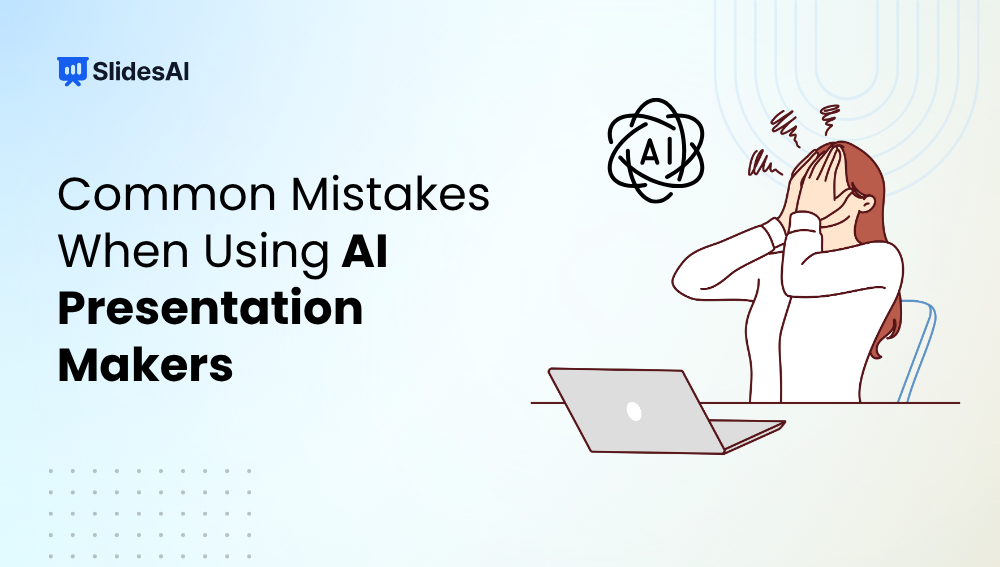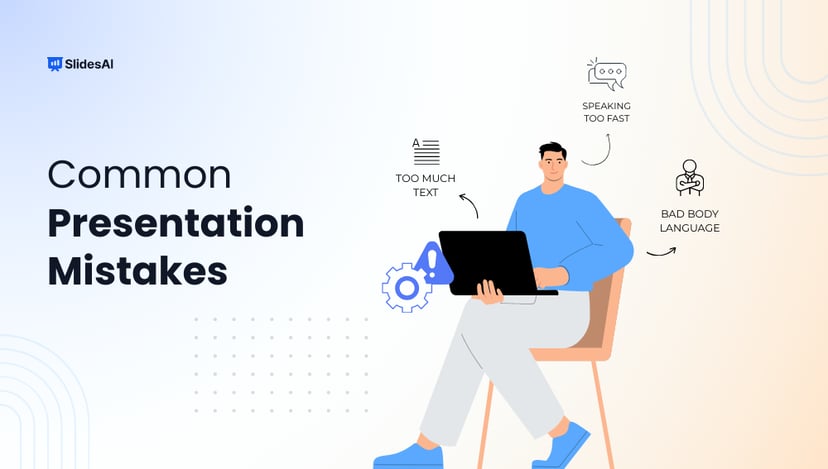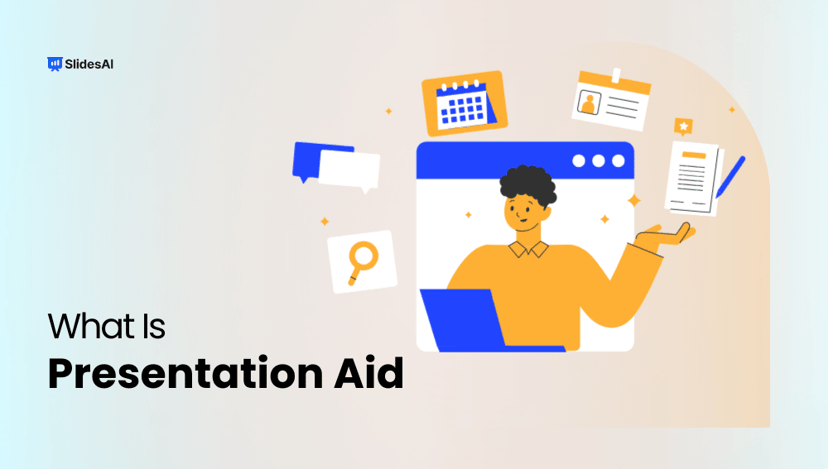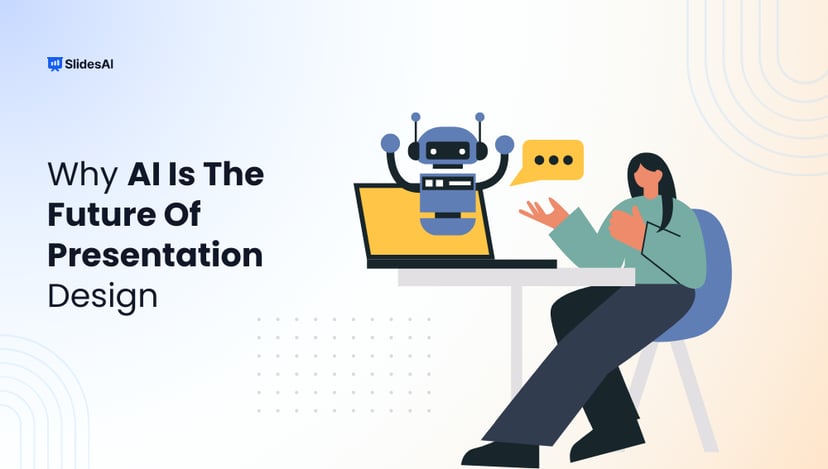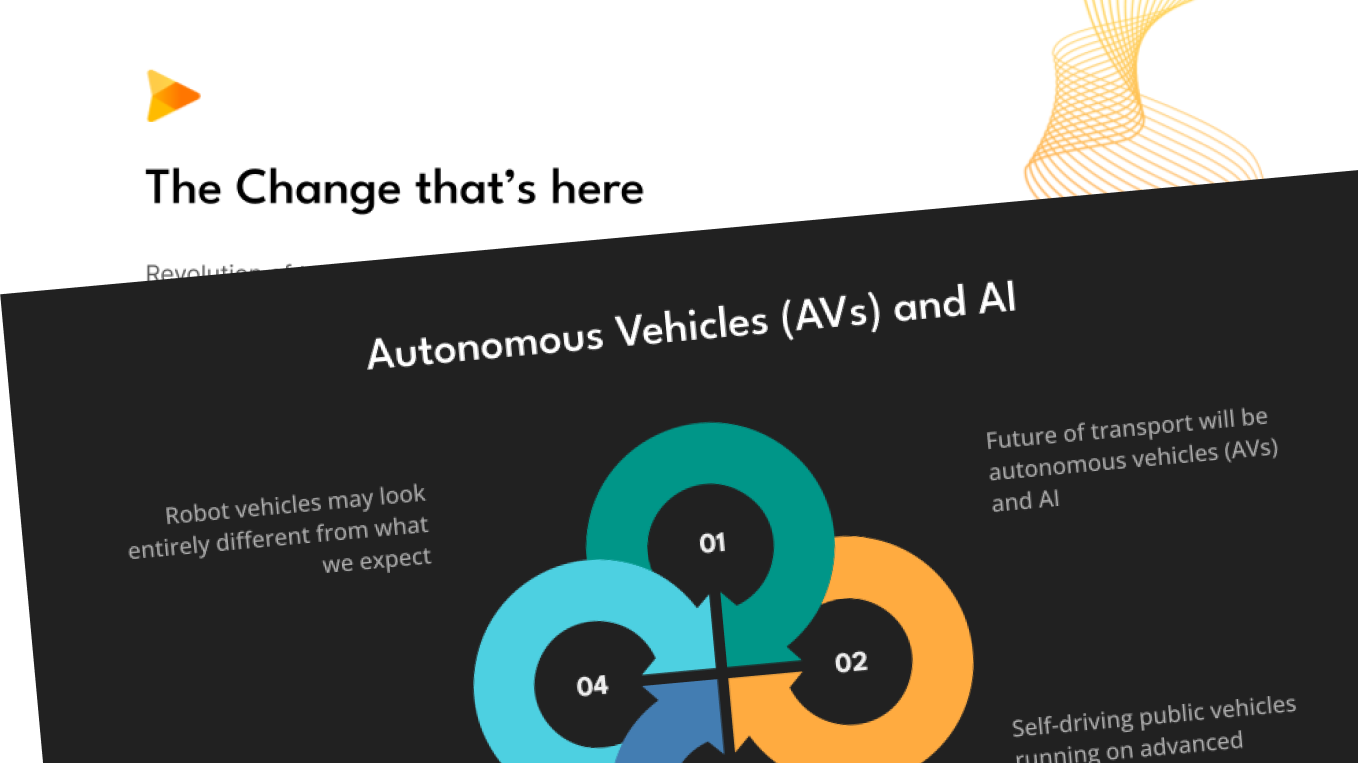Creating presentations with AI tools has become faster and easier than ever. AI presentation makers can design slides, organize content, and even generate visuals in seconds, but they’re not perfect. Many users make small mistakes that can lead to cluttered layouts, off-topic slides, or poorly formatted designs. In this blog, we’ll look at the most common mistakes when using AI presentation makers and share simple tips to help you avoid them, so your slides look polished, professional, and ready to impress.
Key Takeaways
- AI presentation makers save time but still need human editing for accuracy and personalization.
- Avoid common AI presentation pitfalls like text-heavy slides, poor design choices, and a lack of context.
- Always review and refine AI-generated slides to match your brand and audience.
- Use visuals purposefully and maintain accessibility for all viewers.
- Combining AI efficiency with human creativity leads to impactful, professional presentations.
Common Mistakes When Using AI Presentation Makers and How to Avoid Them
AI tools make creating presentations faster and easier, but without the right approach, your slides can still miss the mark. Here are some of the most common mistakes users make when using AI presentation makers and how to avoid AI presentation errors to deliver clear, polished, and audience-ready presentations.
1. Overloading Slides with AI-Generated Text
Problem: AI tools often fill slides with too much text, making them cluttered and hard to read.
How to Avoid: Keep only the essential points on the slide. Use your voice or notes to explain details during the presentation.
2. Over-Reliance on Automation
Problem: Relying completely on AI can result in generic or irrelevant slides that lack context.
How to Avoid: Review every slide and personalize the content to suit your topic and audience.
3. Weak or Missing Introduction/Conclusion
Problem: AI-generated presentations sometimes skip a proper opening or closing, making them feel incomplete.
How to Avoid: Add a custom introduction to set the tone and a strong conclusion to leave a lasting impression.
4. Inconsistent or Low-Quality Content
Problem: AI can generate uneven slide layouts or repetitive ideas that reduce presentation flow.
How to Avoid: Check slides manually, remove duplicates, and ensure the message flows logically.
5. Poor Slide Design or Template Mismatch
Problem: The AI’s chosen template might not fit your presentation style or audience expectations.
How to Avoid: Pick or edit templates that match your brand or event tone and keep the design simple.
6. Overuse of AI-Suggested Visuals and Animations
Problem: AI sometimes adds random stock photos or flashy animations that distract rather than enhance.
How to Avoid: Use visuals intentionally and apply subtle transitions to maintain professionalism.
7. Ignoring Brand Guidelines and Visual Consistency
Problem: Default fonts, colors, and layouts from AI tools may not align with your brand identity.
How to Avoid: Adjust fonts, colors, and logos to match your organization’s branding standards.
8. Neglecting Accessibility
Problem: AI-created slides may include small text or poor color contrast, making them hard to read.
How to Avoid: Use readable fonts, balanced contrast, and ensure accessibility for all audiences.
9. Lack of Contextual Examples
Problem: AI-generated content can feel generic, lacking depth or personalization.
How to Avoid: Add real-world examples, data, or stories to make your presentation relatable and engaging.
10. Skipping Human Feedback
Problem: Many users assume AI-generated slides are final and skip team reviews.
How to Avoid: Always share your slides with peers or mentors for feedback before presenting.
Create Presentations Easily in Google Slides and PowerPoint
15M+Installs
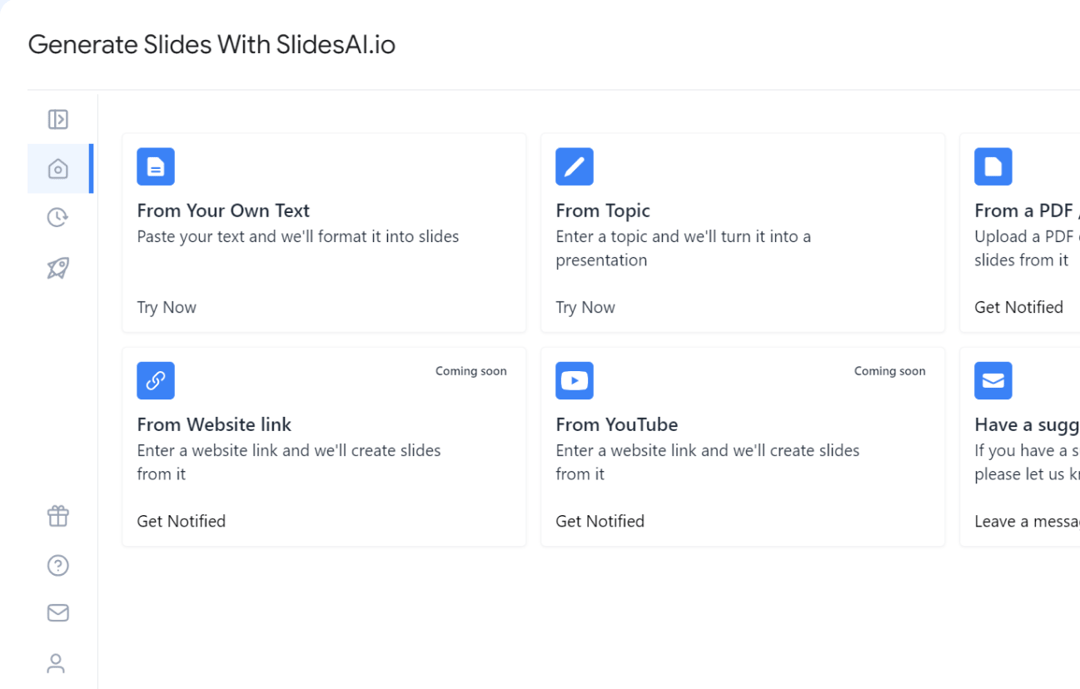
AI presentation makers have made slide creation faster and easier than ever, but relying solely on automation can lead to common AI presentation pitfalls that weaken your message. By reviewing and refining AI-generated slides, ensuring design consistency, and adding a personal touch, you can create presentations that are both professional and engaging.
To take your presentation skills even further, check out this detailed guide on Common Presentation Mistakes to Avoid. It’s packed with insights to help you present with confidence and impact.
Frequently Asked Questions
1. What are the common AI presentation pitfalls?
While AI tools are great for speeding up presentation creation, they can sometimes produce generic or inaccurate content. They may also miss important context or emotional tone. Always review and refine the slides to make sure they’re relevant, accurate, and reflect your intended message.
2. Can students and educators benefit from AI presentation makers?
Absolutely! Students can use AI tools to quickly design engaging class projects, while educators can save time preparing lecture materials. However, both should personalize the slides—adding examples, explanations, and visuals that fit the lesson or audience, so the presentation feels authentic and informative.
3. Is it okay to rely completely on AI for presentations?
It’s best not to. AI can handle the structure, layout, and basic content, but human creativity is essential for adding depth and connection. Your personal stories, insights, and examples make the presentation unique and engaging, something AI alone can’t achieve.
4. How can I make sure my AI-generated slides are high quality?
Keep your slides clean and focused, use minimal text, relevant visuals, and easy-to-read fonts. Review every slide for accuracy and smooth transitions, and practice presenting them aloud. This ensures your delivery complements the AI-generated content and feels natural.
5. Do AI presentation makers support brand guidelines?
Yes, most AI presentation tools let you customize templates, colors, and fonts to match your brand identity. After generating slides, you can fine-tune them, adjusting layouts, adding logos, and ensuring consistency, to maintain a professional and on-brand look.
